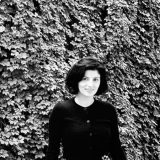Marina Aristotel (b. 1985, Medgidia) is a visual artist. She lives and works in Bucharest. In 2015 she graduated from the National University of Arts Bucharest, painting department, and in 2017 she obtained a master’s degree in the same specialization. She has participated in numerous group exhibitions.
She is currently represented by an important art gallery in Bucharest that has an exhibition space in Switzerland. Her last solo exhibition was in Lugano, Switzerland, at the end of February 2020, just before the introduction of the restrictions caused by the pandemic.
What does art mean to you?
Art awakens me to life. Everything related to art piques my curiosity. Recently I was talking to the coach about how you choose the most appropriate profession and a common idea, to find out what you would do easily daily, is to see what topics arouse your interest, what you could talk about without getting tired, and even with joy. That is kind of what I do with art, and if I hear someone else talk about art-related topics, I immediately direct my attention there. In my case, art allows me to discover my personality. I am more receptive to what is happening in my life and around me. I think art has the grace to make you look for more, it awakens your attention.
When did you feel that your purpose was to be an artist?
Art has always been by my side. I like the idea of communicating through images. Although drawing and painting have always attracted me, it was a time when I studied something else and I was not sure that I would return to art, but I was lucky enough to intersect myself with painting. First I studied at the Academy of Economic Studies, but I felt that something essential was missing for me and I decided to study painting at UNARTE. Since then art has been part of my life constantly.
We live in a capitalist society that emphasizes production, consumption, profit, and success. If the artist sells, he is considered a successful artist. To what extent does the current social order influence your choices, goals, ideals, and intentions?
I think it is not ideal that an artist, with the pressure of tomorrow, has to create something commercial to be able to support himself. I am lucky that I have a second profession. Apart from art, I also deal with a business, and then I do not have that pressure. Fortunately, I can create exactly what I feel. I have the time and freedom to experiment with materials and choose what I like, which helps me express my ideas whether the result is commercial or not.

Marina Aristotel, Resurface ing, 2019, 100 x100cm. Courtesy of the artist.
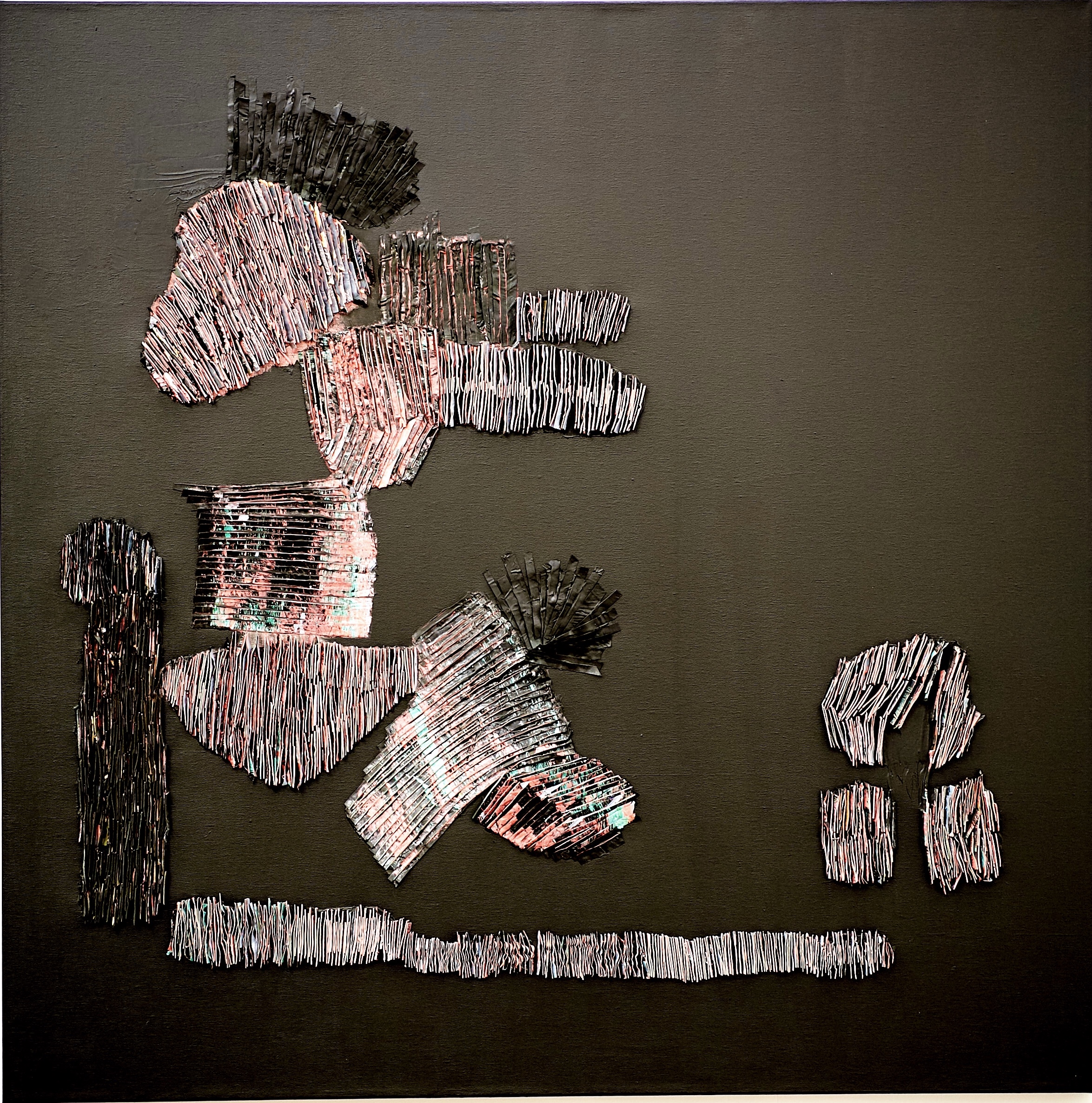
Marina Aristotel, Rethink ing, 100 x 100cm, 2019. Courtesy of the artist.
What is your relation to the artistic environment?
I am aware of the exhibitions that are being held and I try to get there as often as I can. In addition, I also try to get to the big events like the Biennials or the Documenta. I cannot wait this summer to get to Documenta in Kassel, I was also at the last edition and, indeed, you feel that you can take the pulse of contemporary art by visiting this exhibition.
You have a representation contract with an important contemporary art gallery in Bucharest. How did the collaboration with Estopia Gallery begin?
Irina Ungureanu, one of the founders of the Estopia Gallery, approached me after seeing my works in a group exhibition. After a visit to my studio and a discussion about the projects I was working on, we decided to sign the representation contract, and, subsequently, I had personal exhibitions at the gallery headquarters in Bucharest and Lugano, Switzerland.
Do you think an artist can make himself known on his own or only collaborating with an art gallery can guarantee his success?
Surely working with an art gallery is an important factor to increase an artist’s notoriety. In addition, I think this is how it can reach a new audience and even be different from the one he is normally exposed to. Obviously, some artists are successful without being represented by a gallery, but there are a few cases and will also have to devote time to the promotion part, which in many cases is not a pleasant activity for the artist, who prefers to focus on the creation.
Please tell me about your artistic practice?
For me, one of the mottos that guide me in art is to always experiment, not to limit the expression. For this reason, I have worked with novel materials such as resin, and plexiglass, my works often being at the boundary between painting and object. I was attracted to the resin, with which I started working during college, and I continued over the years because it has a special character of “swallowing” the other materials. I enjoy its transparency that allows the use of layers and gives a diaphanous touch to the surfaces but also blocks the elements over time, you can no longer intervene once it is dry. It is a contrast that I use often because in my art I am concerned about the process and the stages by which I build the works.

What comes first in your work? What do you focus on?
For me, it is essential to play with the surfaces, with the volumetry and the proportions. For a good part of the work I initially set the chromatic palette and an initial composition, but as I work I also allow the hazard to intervene. At each stage, I analyze the direction of the work and can introduce new elements or even different materials. I seek through my art to challenge people to look for, to be more attentive to what is around them. Many times those who look at my works want to touch them and understand how they are built. They tell me what they like or do not like what they see there. This dialogue is very important to me.
What is your favorite project?
At this point, I would choose the AASAMBLAJ series which was also my first personal exhibition and it was a transition from resin to assembly, a technique with which I later experimented in several environments, from acrylic to plexiglass. The works in the AAsamblage series are works that change their state and shape there is an initial painting that I paint freely, it is the feeling and momentum that builds them afterward I cut, cut them out, disassemble and recompose/assemble them rigidly, geometrically, in contrast to the initial momentum. In the final work, the most important aspects are related to chromatics and composition.
How much time do you spend in the studio?
It depends on the period. Most of the time I spend near an exhibition, but on average there are about 3-4 days a week in the studio, although I can say that my mind is most open to art regardless of whether I am in the workshop or not.
Do you need a certain state to be able to create or does inspiration come naturally the moment you start working?
I have moments when even though I am in the studio I do not have the mood to work. Usually, in such moments, I rearrange the works or do something quite mechanical, such as preparing a canvas or painting a monochrome background, or even looking at work for a long time, and most of the time, the state comes and I start working. Disconnecting and creating as soon as you enter the studio is hard.
At what point of day do you create best?
I certainly feel much more inspired during the day when I work in natural light, I see the colors and textures closest to reality, and I enjoy the process. That is why I prefer to work in the first part of the day, and if I am in the workshop in the evening I will do more activities to organize the studio or my works.
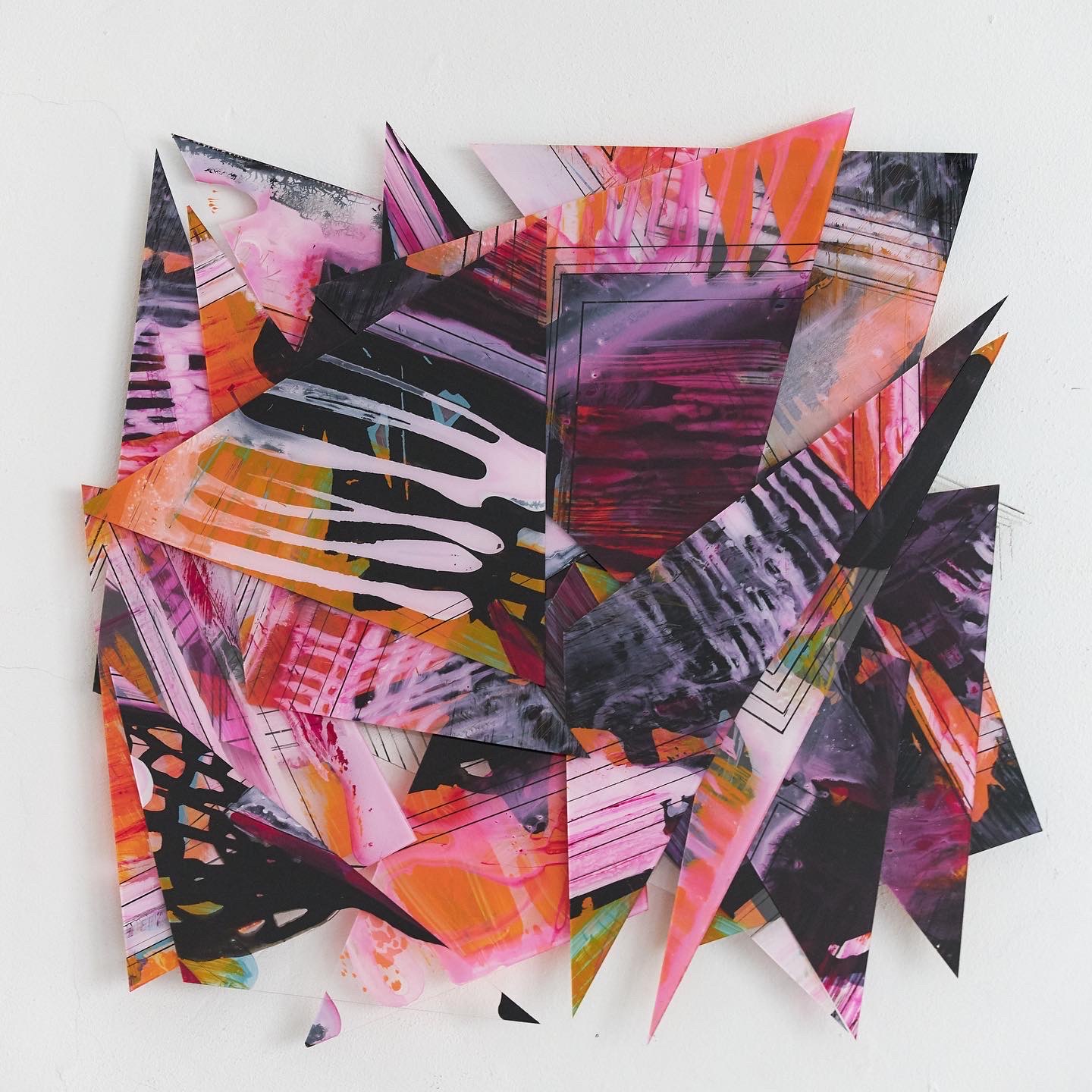
When do you know you have finished work?
I think that is the hardest decision about work when you think it is finished. In college, we had a lot of discussions on this topic because as artists in many cases we are attracted to change something to work, to improve or everyone sees something else in the works of others, something that may look better or not. Later, a teacher told me that a work is finished when you can no longer take out and you can no longer add any element and I think that this is where the balance of work lies, to know exactly when you have reached this moment and to stop, to declare it finished.
Very often when entering a contemporary art gallery, the audience is faced with the famous question isthis art? Why do you think contemporary art is a challenge for the viewer?
I think the viewer no longer has the support of the figurative, something recognizable that gives him a direction and that is where the major challenge of contemporary art comes from. Now most artists have a personalized vocabulary and it is useful to read about the artist when we see an exhibition, to understand his background, and his overall message and then we can appreciate the works differently. Especially in the case of abstract art, the viewer has several questions, but I think that is also the beauty of this art to awaken a feeling, a memory, or even curiosity. For this reason, I choose to work in the abstract, to give as much freedom as possible to the viewer. In my exhibitions I prefer to let the visitor take a tour by himself to see the works uninfluenced and, later, we discuss what he saw/felt and I also say what I had in mind when I did a certain work. It is interesting to look at other points of view, and I think that is how you know yourself better in this process.
With what attitude should we step into an art exhibition signed by Marina Aristotel?
I think an open-minded attitude is indicated. Over the years I came up with new textures and elements that surprised even those who knew my art. Through my works I want to arouse the curiosity of the viewer, to make him wonder, to find his “own beauty”. I think everyone can be touched by an image, a gesture, a color, or a particular line.
What are you preparing for the current year?
I am currently working on a new series called “The book of delights” where I am mapping spaces and happy moments chosen from memory. I focus on these good moments of life to bring hope and positivity, each work is inspired from a chromatic point of view, compositionally by such a moment. This series will be exhibited in a personal exhibition this year, and besides this project, I participate with works in several group exhibitions.
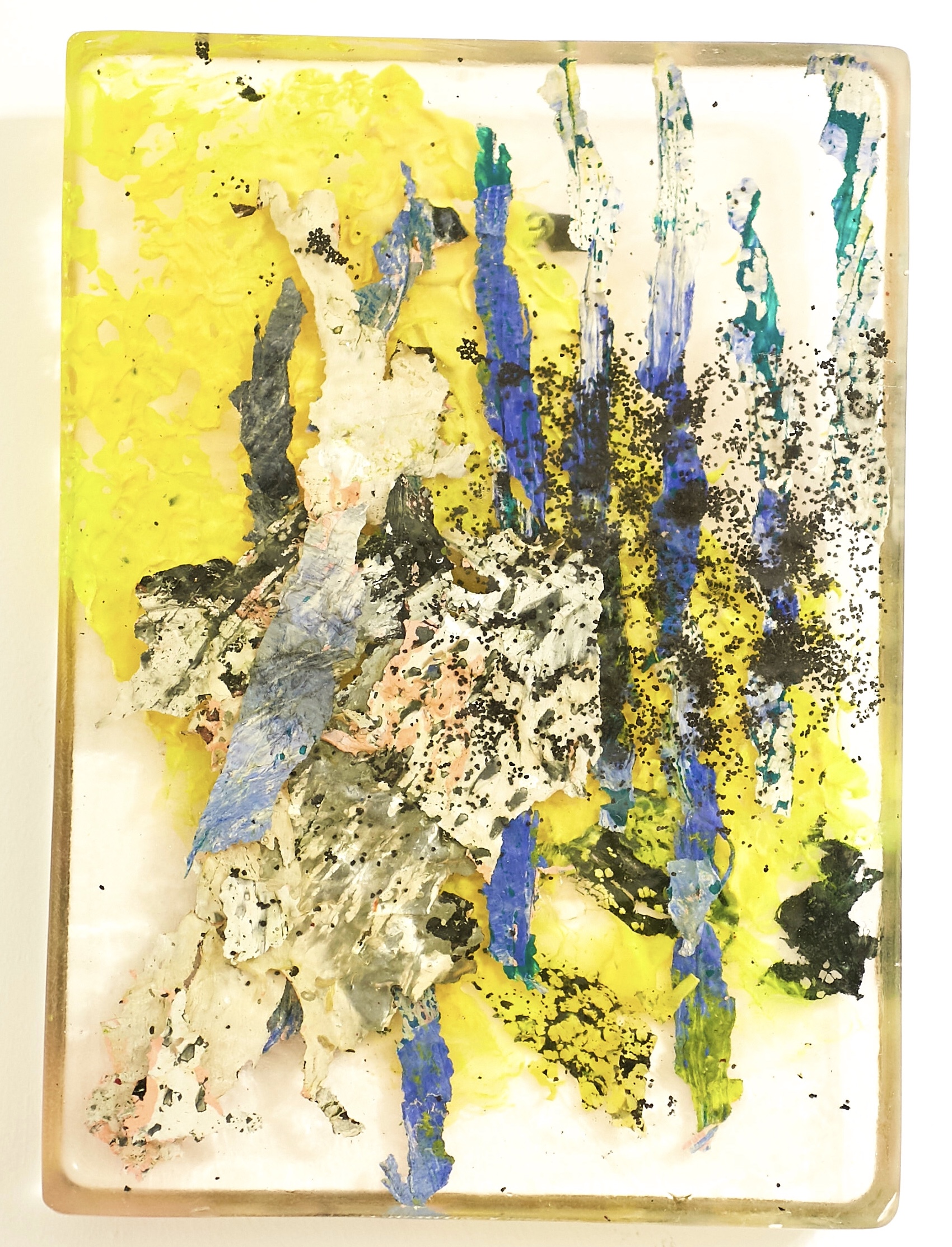
Marina Aristotel, Solid Trails, 22x30cm, 2016. Courtesy of the artist.
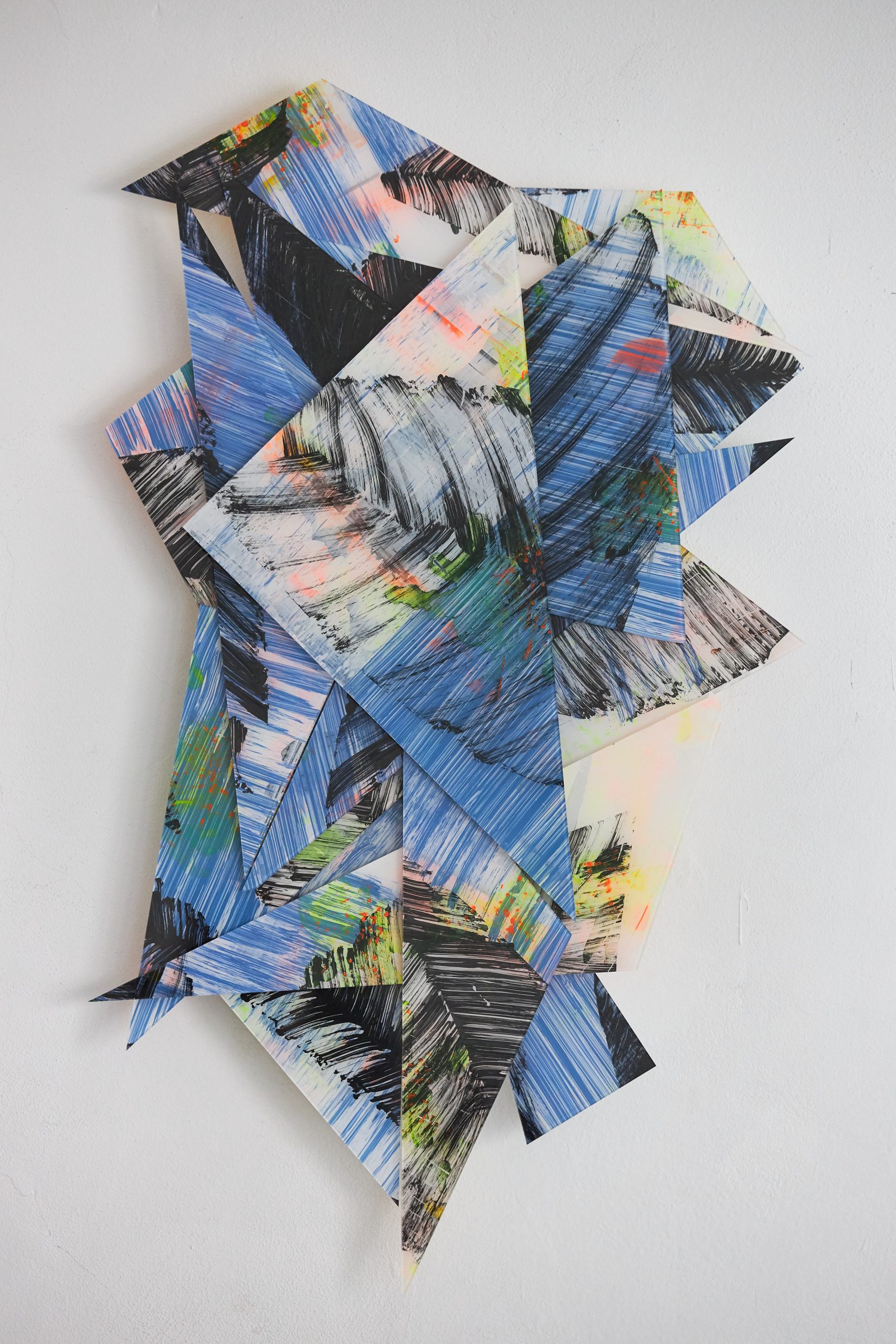
Marina Aristotel, Frames of the Amazon, acrylic paint on plexiglass, 70x46cm, 2019. Courtesy of the artist.
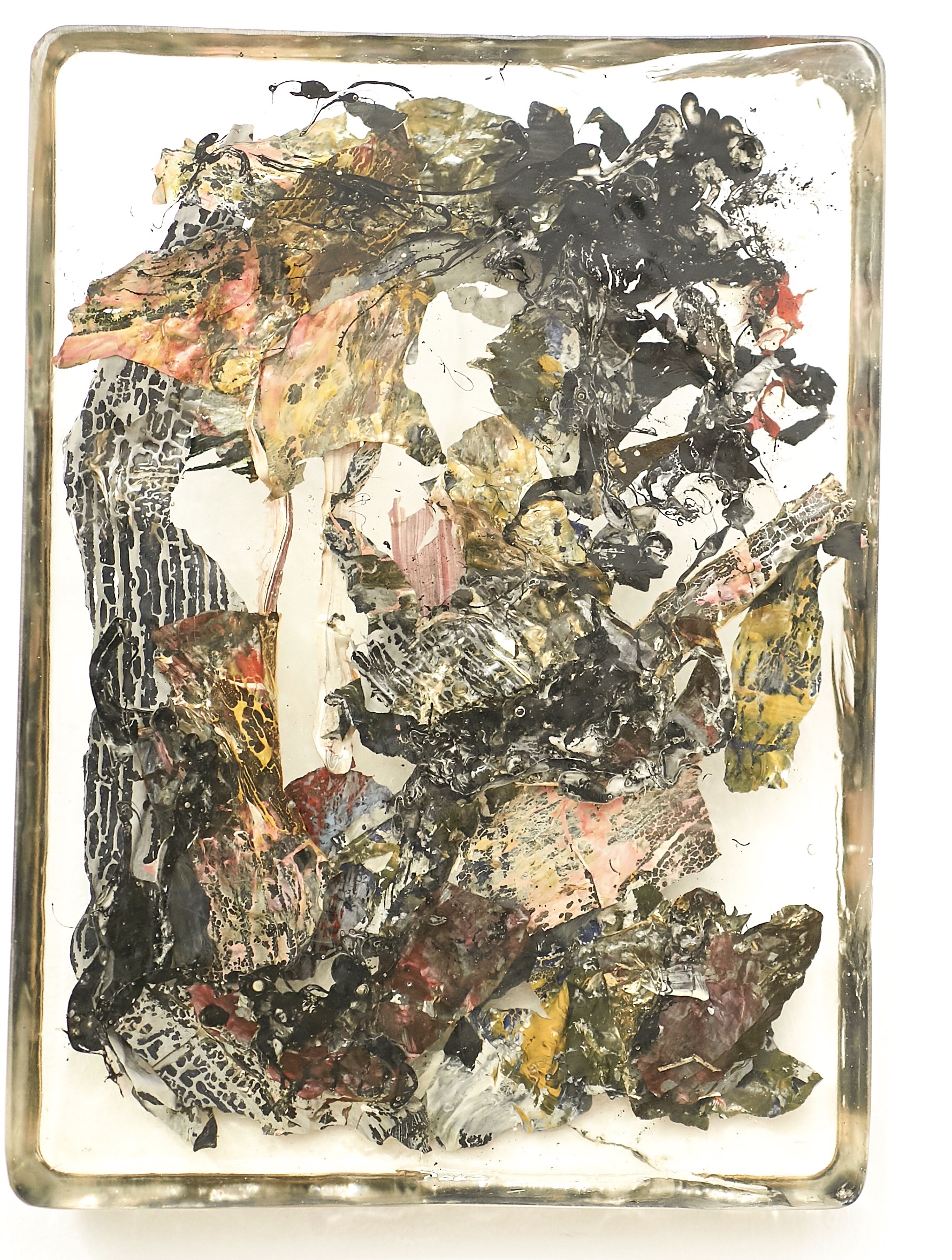
Marina Aristotel, Complexity, 22x30cm, 2016. Courtesy of the artist.

Marina Aristotel, Golden_hour, 22x30cm, 2016. Courtesy of the artist.
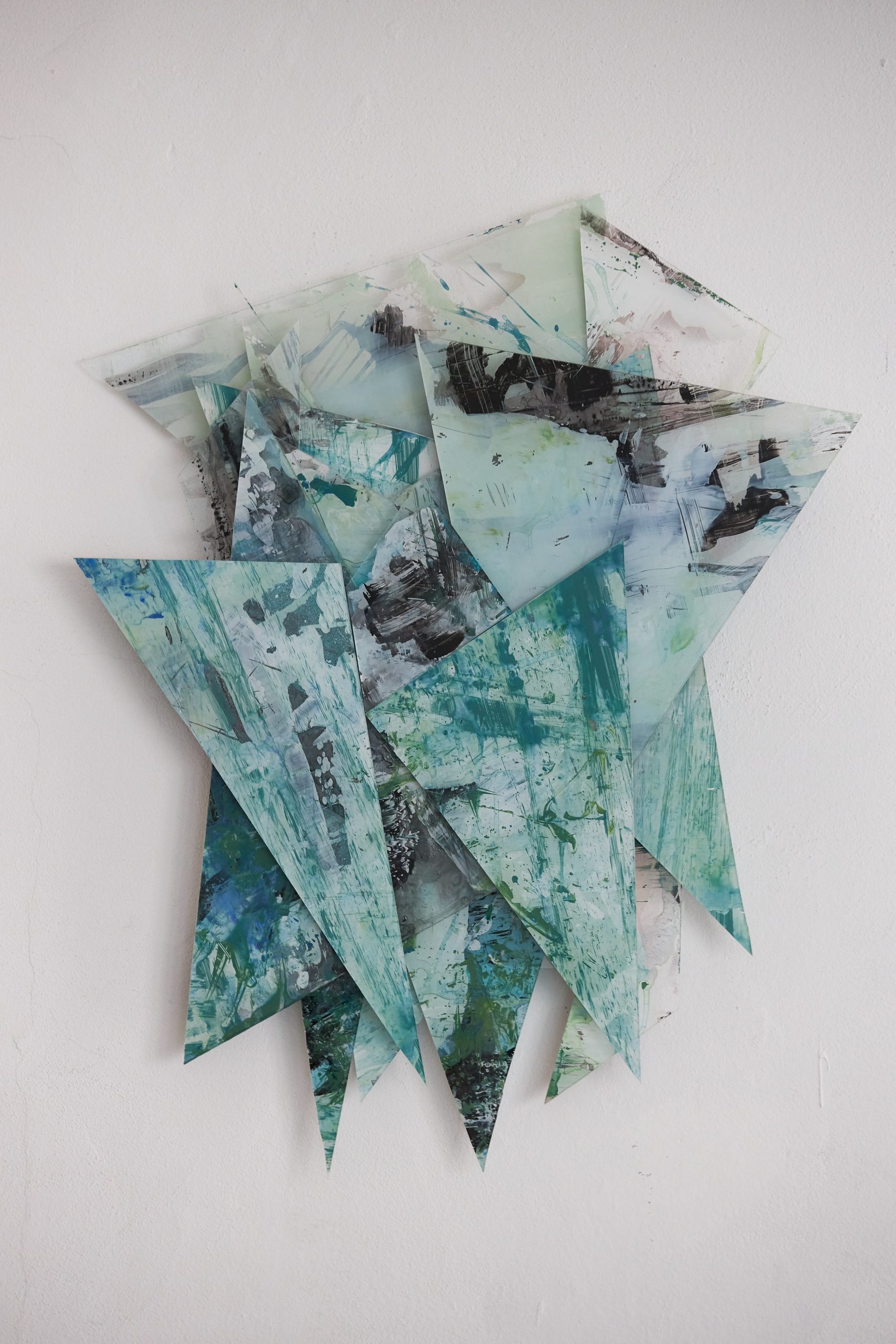
Marina Aristotel, Parts of the Same You, acrylic paint on plexiglass, 57x45cm, 2019. Courtesy of the artist.
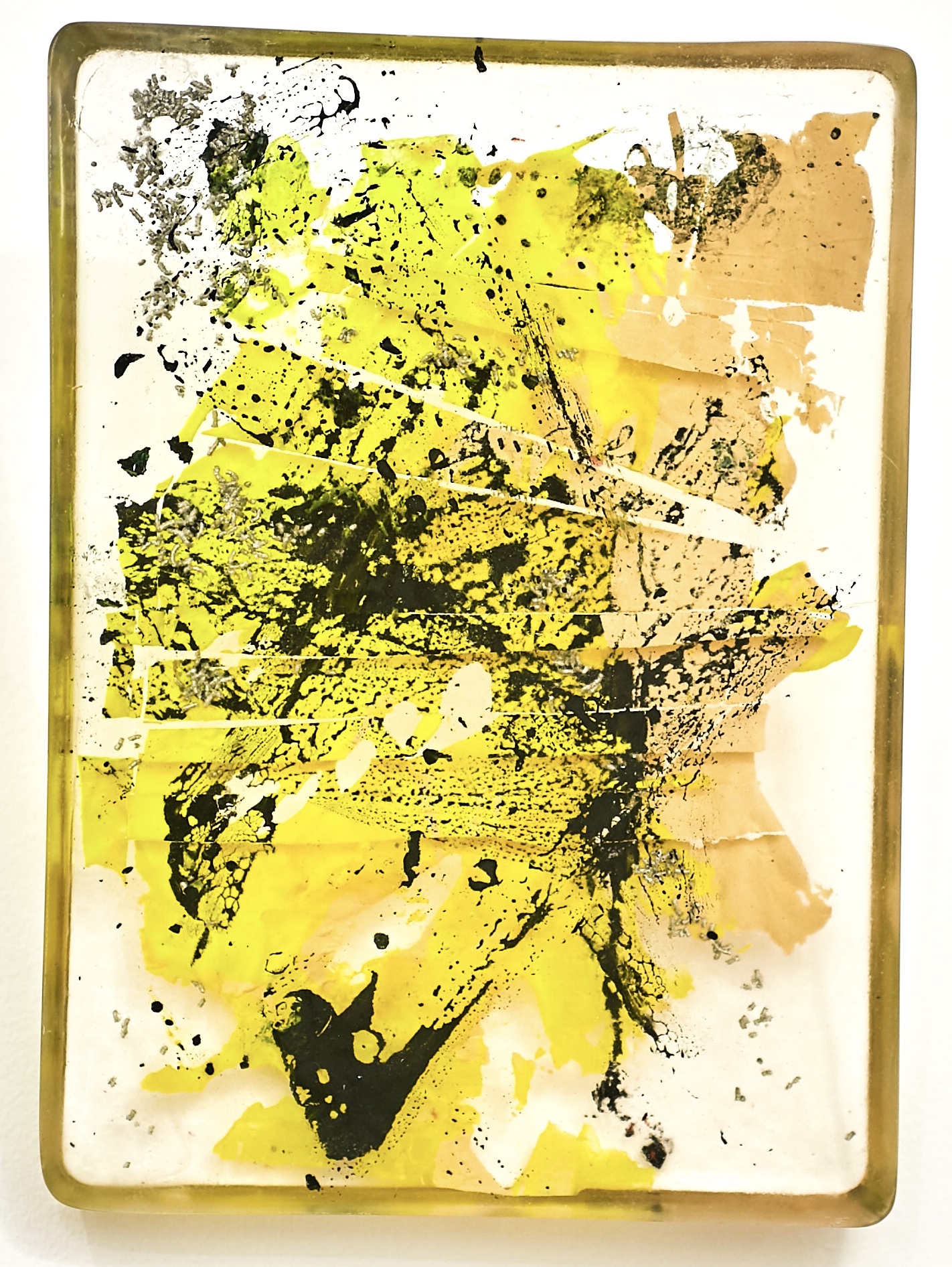
Marina Aristotel, Trails, 22x30cm, 2016. Courtesy of the artist.

Marina Aristotel, Pieces of Reef Geometry, acrylic paint on plexiglass, 44x79cm, 2019. Courtesy of the artist.


